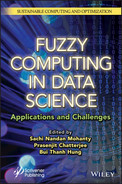14
Optimization of Energy Generated from Ocean Wave Energy Using Fuzzy Logic
S. B. Goyal1*, Pradeep Bedi2, Jugnesh Kumar3 and Prasenjit Chatterjee 4*
1 City University, Petaling Jaya, Selangor, Malaysia
2 Galgotais University, Greater Noida, U.P., India
3 St. Andrews Institute of Technology & Management, Gurgaon, India
4 MCKV Institute of Engineering, West Bengal, India
Abstract
The popularity of energy generation from renewable resources had increased in the last decades. Different sources, such as solar energy, wind energy, biogas energy, etc, are the most popular energy sources. But ocean wave energy as an alternative to conventional energy sources is also gaining much attention from researchers. As earth contains approx. 71% of water all around and the ocean contains approx. 97% of the total water on earth. So, this can be the most effective medium to utilize such a huge resource to fulfill the energy requirement of people worldwide. Many factors can determine the amount of power generated, such as wave height, time period, frequency, etc. These factors influence the amount of utilizable wave energy potential. In this chapter, a model is presented that can evaluate the power generated from ocean waves. Further, it can maximize the overall power generated by the application of a fuzzy optimizer.
Keywords: Ocean waves, energy generation, wave energy converter, optimization, fuzzy logic
14.1 Introduction
Renewable energy resources are the most abundant and clean infinite energy reserves that need to be extracted properly for energy generation to combat environmental degradation. This includes various resources, such as solar, wind, wave energy, etc. Of these resources, the wave energy is available with a higher-energy density that needs to be extracted deploying a proper conversion technology [1]. In recent years, there have been a large study on various wave energy generation systems by different researchers to extract maximum energy from them [2, 3]. Researchers have classified the wave energy generating station into three types, namely single-body floating buoy, two-body floating buoys, and multibody floating buoys by the number of floating buoys [4], as shown in Figure 14.1.
“Girard and Son” a company from France were the first one to study the possibilities of generating power from these resources and have patented their idea in early 1799 [5]. After their idea, the first device employed and its development for wave energy extraction was studied and patented by Leishman and Scobie in 1855 up to 1973. Since then various countries such as United Kingdom, Portugal, Ireland, Norway, Sweden, and Denmark have been searching the possibilities of extracting the energy from these resources efficiently for industrial power consumption in short-term and long-term systems [5]. Figure 14.2 depicts the nature of the ocean waves [6, 7].
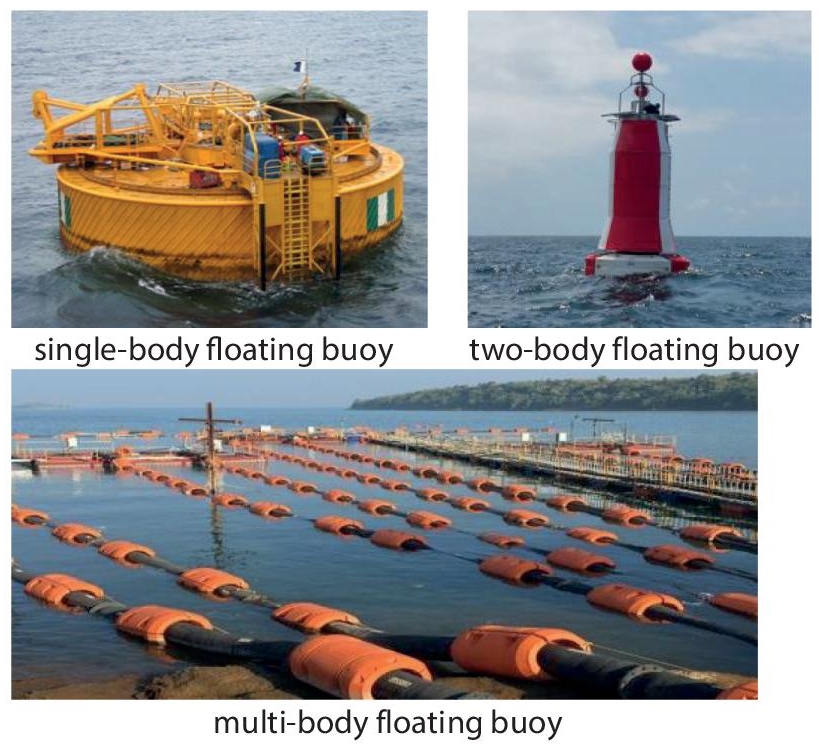
Figure 14.1 Types of buoys for ocean wave.

Figure 14.2 Waves motion and depth.
Equation 14.1 shows the basic formula for energy extracted from these systems and was found to be proportional to the square of amplitude and period of the wave in motion.

- where ρ = Water density
- g = Gravitational constant
- A = Wave amplitude
- Vg = Wave speed.
Even though the waves in the ocean have tremendous energy stored in them, we need an efficient conversion system to extract the maximum of it for industrial and domestic use. The problems in areas in designing the control system include peak-to-average load ratios, which are highly random and varying and the prediction of the loads becomes difficult before implementing the device in the ocean. Thus, the implementation of any wave energy control (WEC) requires a deep study of the wave nature, frequency, and amplitude to make the system economical and favorable. WECs are also advantageous in terms of environmental factors [8].
14.2 Control Approach in Wave Energy Systems
Many conversion systems have been studied by researchers around the world, and one common mechanism was found in all of them, that is, each of them employed a mechanical conversion system to study the wave nature and its variation and an electrical generating station to convert the mechanical energy into electrical form.
The mechanical conversion device converts the wave energy of the tides into a more usable form for which it may employ various hydraulic coupling arrangements, gearboxes, etc. The system may result in added mechanical losses and does require extra maintenance for the device. Therefore, researchers have been trying to focus on making use of generators associated with the sea waves to reduce these extra losses and maintenance costs. Therefore, linear generators are being studied for the extraction of wave power from the oceans to a more usable form [9, 10]. For the extraction of maximum power/electricity, there is a need to consider the mathematical evaluation of the energy features needed for supply. The magnetic design plays a key role in influencing the energy outcomes from the conversion system. In the study to combat such difficulties of the systems, a permanent magnet (PM) linear electrical generator design has been made and built to attain effectiveness. Figure 14.3 shows the basic converter technology being used in wave energy generating stations.
The converters in the wave energy systems make use of different technologies which is being divided into three main categories as follows [8]:
Oscillating water column (OWC)
Oscillating body converter (OBC)
Overtopping converters (OTC)
An oscillating water column is the kind of WEC, which are meant to absorb the power resulting from the oscillation of seawater inside a chamber structure resulting from the waves. This chamber can be a constant one or a floating shape that merely depends on the convention. The oscillating body converter is the converter that moves along with the wave oscillation.
These devices can be floating on the waves or fully submerged and hence are capable of extracting more energy from the strong waves in the oceans. CorPower Ocean AB is one of those institutions that develop this floating type oscillating body converter.
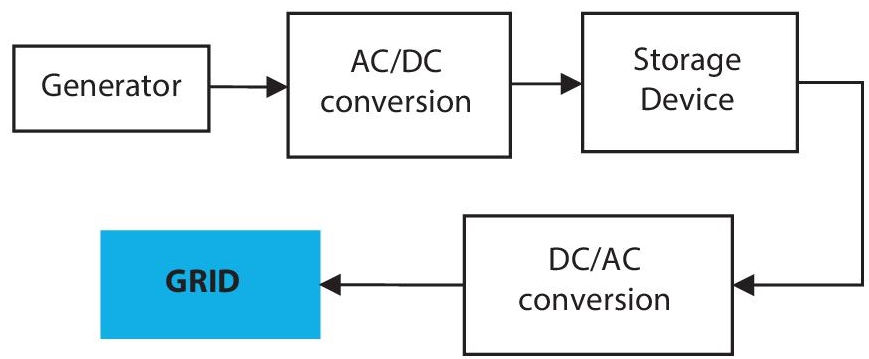
Figure 14.3 Block diagram of a sea wave energy harvesting device.
Due to their area of installation, these devices are also addressed as offshore or as third-generation devices and found to be more complex when we compared them with OWC. Overtopping converters elevates are the converters that elevate the waves of the ocean above the sea level, and the water is then drawn from a height to the turbine and then to the generator for power generation in the form of electricity.
14.3 Related Work
Falnes et al. [1] discussed the wave spectrum parameters associated with shipping, distribution, and variability of wave energy within the sea for energy extraction. Many unique kinds of wave-energy converters, of numerous categories, had been brought into study. They have considered the primary conversion of wave mechanical energy by using an oscillating device as a wave-interference phenomenon and thus, corresponding to optimum wave interference have proposed that there is a higher bound to the quantity of energy that is possible to be extracted from a wave by a selected oscillating system. They have derived an upper bound for the ration of the wave energy extracted to the volume of the wave energy immersed in the oceans. In the end, the two upper bounds and their significance were also studied in this review paper. Falcao et al. [2] focused on the various factors associated with the development of wave energy electricity since 1970. Various topics have been brought into studies such as wave power as a resource, briefing of its historical background in respect of hydrodynamics of wave energy absorption, and its controlling. The paper discusses the various studies carried following the wave energy conversion devices and its development in recent years. The concept, design, version-testing, creation, and deployment into the real sea of prototypes; and the improvement of sea equipment (air and water generators, excessive-stress hydraulics, linear electric turbines) and mooring structures.
Chen et al. [4] focused on the extraction of energy from offshore waves in the ocean since it has been found that extraction of energy can be easily predicted in offshore waves as compared to other systems such as shoreline waves, near-shore waves, and tides. The paper has focused on various aspects of this generating station, such as wave energy extraction technologies and the linear generator and wave interaction. The study has depicted that the design of floating buoy and linear generators performs a critical function within the operational performance of offshore wave energy extraction machine. This conclusion is meant to define paths for further researches to be done in this field.
Sešek et al. [5] focused their work on the erosion done by the sea waves, which may result in deterioration of the infrastructure and unwanted shore changes, which may finally result in floods and pollution. My device is being proposed by the paper for monitoring of wave movement and analysis with the basic sensor and its result is also measured and projected.
Ringwood et al. [11] presented an overview of the control strategy of energy maximization techniques of wave energy converters. In this paper, the researcher explained the mathematical model and two control strategies along with algorithms for forecasting of eave energy generated. Out of two, one of the control strategies is optimal control strategy.
Feng et al. [12] analyzed the three, five, and eight float wave energy converter arrays. Researchers have implemented a differential evolutionary algorithm to achieve fast conversion and accurate results. The optimal results are obtained with an eight-float setup. It was observed that the greater the interaction between wave energy and converter, the higher the efficiency.
Neshat et al. [13] explored the optimization of energy generated from a three-buoy wave energy converter. The total energy of the system is optimized by adjusting the position of buoys. This system takes wave parameters on the optimal location of buoys and generates maximum power. The algorithm is named as hybrid cooperative coevolution algorithm having local search strategy and backtracking strategy for optimizing the positions of WECs, respectively.
Neshat et al. [14] proposed the optimization of a wave energy converter and placement of oscillating buoy. In this work, research proposed the design of wave farms with three-buoy architecture that is fully submerged and oscillating. The design is focused on power maximization and extract maximum output by placing buoys at optimal places. The result was evaluated on numerical optimization and calculation.
The increase in the electricity demand of the population can be efficiently tackled by improving the control system in the wave energy extraction infrastructure. India being a peninsular country is surrounded by the oceans on three sides and is exposed to enormous wave energy reservoirs. The enhancement in the design of the wave energy trappers along with the controller for the electronic converters and reduce the overall cost of the generating system. The area deploys a wide area for R/D in predicting the waves and loading parameters at the site to enhance the power output from the system and its smooth operation.
14.4 Mathematical Modeling for Energy Conversion from Ocean Waves
Most of the wave energy converter (WECs) extracts energy from an ocean wave. These systems don’t store energy and termed as a real wave conversion process which means if the wave is strong then the energy generated will be more. Otherwise, energy generated will be less in the condition of weak waves. Sometimes, it may not generate energy [14]. Ocean wave converter (OWC) uses constant pressure to extract and store energy. The pressure is used to rotate the turbine and generate electricity. Figure 14.4 illustrates the block diagram of the conceptual model for electricity generation. Ocean energy is calculated as a summation of potential energy (PE) and kinetic energy (KE).
The wave energy is considered as sine wave having up and down motion results in vibration, represented as simple harmonic motion (SHM) as expressed below:

- where:
- A= Sea Wave height (in m)
- v: Wave propagation velocity (in m/s)
- λ: Wave length (in m)
- t: Wave peak time (in s)
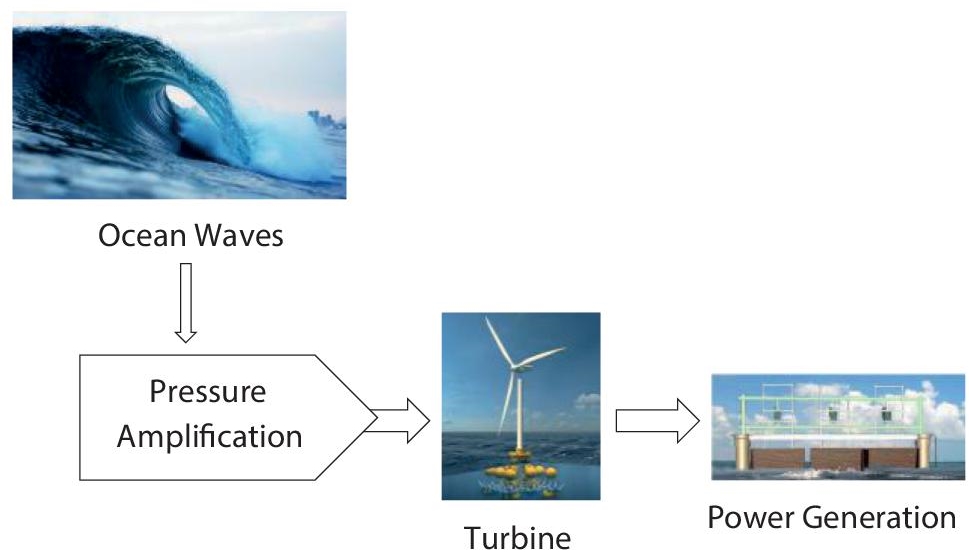
Figure 14.4 Conceptual model wave energy generation.
The particle velocity vp, is calculated as:

Potential energy is calculated as:

The kinetic energy is calculated as:

The total energy generated per unit volume is calculated as:

14.5 Proposed Methodology
The following problems are faced: The power generated from solar energy is not constant throughout the year. It is weather dependent and its efficiency drops due to weather conditions. The maintenance cost of solar as well as wind energy is high.
Existing wave energy converters (WECs) do not use an energy storage system and depend on real-time extraction which means when strong waves are generated then only energy is generated. Need to focus on other ocean parameters other than wave height and to optimize them for maximization of output power.
In this work, a model is presented that can consider different wave parameters that can be optimized to maximize the power generated from wave energy using fuzzy logic. As power generated from ocean waves may be low as compared to other resources. So, it is needed to optimize the available resource to its maximum level. Different ocean parameters are fed into the fuzzy that will result in maximum output from the same input. The proposed flow diagram is shown in Figure 14.5.
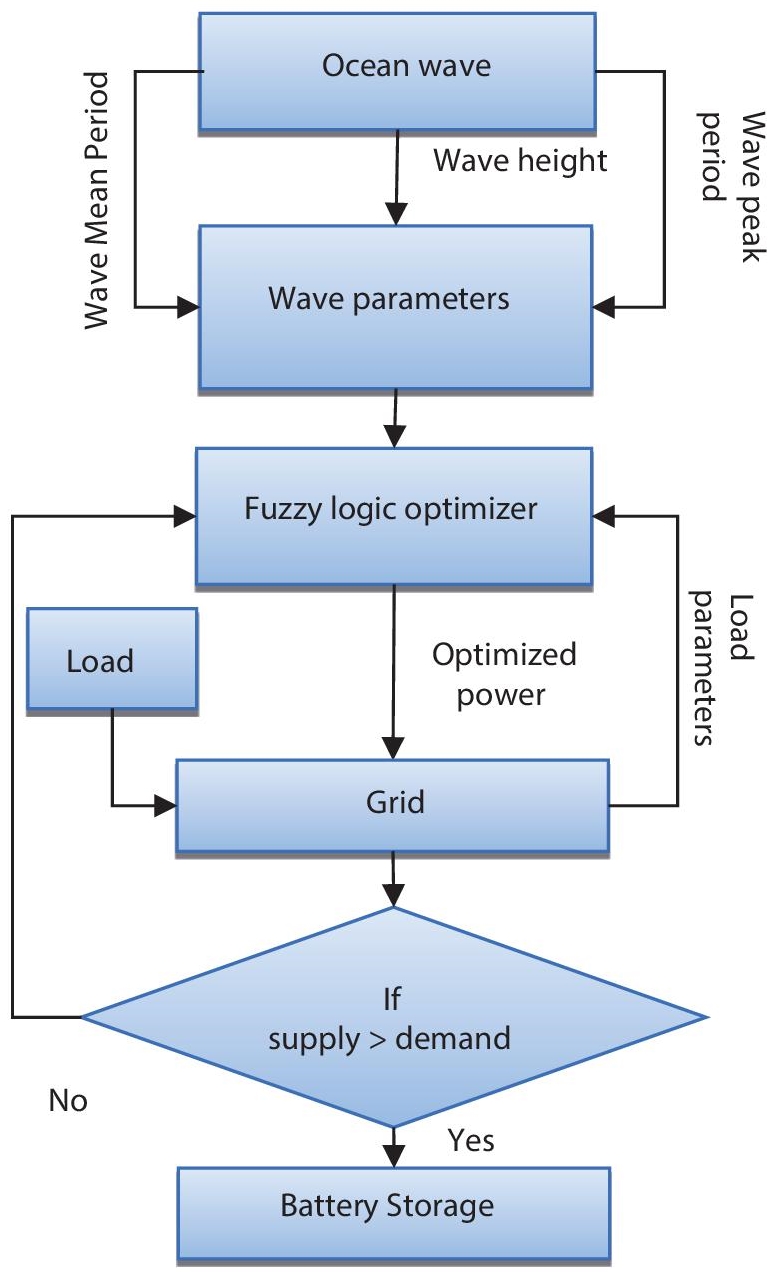
Figure 14.5 Proposed wave optimization model.
14.5.1 Wave Parameters
As mentioned above, some wave parameters that are needed to be optimized to extract maximum power:
Wave Height: The wave height is one of the most important parameters that is used to determine the wave energy. It is calculated as the difference between ocean wave trough and crest, as ocean wave is similar to a sine wave.
Peak Period: The peak period is defined as:

where fp = maximum value of spectral peak frequency.
Wave Mean Period: The wave mean period is calculated as the average time period that is used to design wave turbines for energy generation.
14.5.2 Fuzzy-Optimizer
The procedure of the Fuzzy-Optimizer method is as follows:
Step 1: Assignment of decision group having N members.
Step 2: Concerning input, Xij, the fuzzy output is generated with n decision-makers.
Step 3: Evaluation of aggregate result out of decisions.

where Xij = (aij, bij, and cij) are decision makers having weight wij = (wij1, wij2,wij3) calculated as:

Step 4: Compute Normalized fuzzy decision matrix


Step 5: Compute the fuzzy true (positive) solution and fuzzy false (negative) solution. The FTS and FFS are calculated as follows (Table 14.1):
The proposed optimizer accepts three input variables related to waves, such as wave height, Peak period, and mean period. The fuzzy optimizer outputs two crisp variables namely, the pressure amplification value and torque. This amplified pressure is used to give high torque to rotate the turbine system for power generation. in grid Seven variables are assigned for each input and output variable, that is FB (false big), FM (false medium), FS (false small), Z (zero), TS (true small), TM (true medium), and TB (true big). A sample fuzzy rule table is given in Table 14.1. The membership function will be chosen for all input and output variables in the specified range.
Table 14.1 Fuzzy rules for optimization of parameters.
| FB | FM | FS | Z | TS | TM | TB | |
| FB | FB | FB | FM | FM | FS | FS | Z |
| FM | FB | FM | FM | FS | FS | Z | TS |
| FS | FM | FM | FS | FS | Z | TS | TS |
| Z | FM | FS | FS | Z | TS | TS | TM |
| TS | FS | FS | Z | TS | TS | TM | TM |
| TM | FS | Z | TS | TS | TM | TM | TB |
| TB | Z | TS | TS | TM | TM | TB | TB |
14.6 Conclusion
The primary focus of this work is to use other renewable resources, such as ocean energy to generate power, which will give a subject for future research. In this paper, a model is presented using fuzzy logic control whose function is to optimize energy generated by ocean waves. These waves are first tracked, and then its influencing factors are evaluated whose variation impact generated power. The fuzzy optimizer is designed on fuzzy membership functions on three variables, such as wave height, wave peak period time, and wave mean height produced. These wave parameters will decide the frequency of waves generated and the power extracted. The generated power is supplied to the grid whose load is fluctuating in nature. So, these load parameters are also fed into a fuzzy system to optimize energy according to demand. If there is a shortage, then the system will generate an alarm that will help to compensate for energy shortage. Therefore, to meet the future demand for renewable energy sources, ocean wave energy is one of the effective medium for researchers.
References
- 1. Falnes, J., A review of wave-energy extraction. Mar. Struct., 20, 185–201, 2007. https://doi.org/10.1016/J.MARSTRUC.2007.09.001.
- 2. Falcão, A.F.D.O., Wave energy utilization: A review of the technologies. Renew. Sustain. Energy Rev., 14, 899–918, 2010, https://doi.org/10.1016/J.RSER.2009.11.003.
- 3. Oǧuz, Y., Güney, I., Çalik, H., Power quality control and design of power converter for variable-speed wind energy conversion system with permanent-magnet synchronous generator. Sci. World J., 2013, 1–14, 2013, https://doi.org/10.1155/2013/783010.
- 4. Chen, Z., Yu, H., Hu, M., Meng, G., Wen, C., A review of offshore wave energy extraction system. Adv. Mech. Eng., 623020, 1–9, 2013.
- 5. Sešek and Trontelj, J., Measurement System for Sea Wave Monitoring, Procs. of 49th International Conference on Microelectronics, Devices and Materials, Kranjska Gora, Slovenia, September 25th - 27th, 2013.
- 6. Clément, A., McCullen, P., Falcão, A., Fiorentino, A., Gardner, F., Hammarlund, K., Lemonis, G., Lewis, T., Nielsen, K., Petroncini, S., Pontes, M.T., Schild, P., Sjöström, B.O., Sørensen, H.C., Thorpe, T., Wave energy in Europe: Current status and perspectives. Renew. Sustain. Energy Rev., 6, 405– 431, 2002, https://doi.org/10.1016/S1364-0321(02)00009-6.
- 7. Leijon, M., Bernhoff, H., Ågren, O., Isberg, J., Sundberg, J., Berg, M., Karlsson, K.E., Wolfbrandt, A., Multiphysics simulation of wave energy to electric energy conversion by permanent magnet linear generator. IEEE Trans. Energy Convers., 20, 219–224, 2005, https://doi.org/10.1109/TEC.2004.827709.
- 8. Polinder, H., Damen, M.E.C., Gardner, F., Linear PM generator system for wave energy conversion in the AWS. IEEE Trans. Energy Convers., 19, 583– 589, 2004, https://doi.org/10.1109/TEC.2004.827717.
- 9. Trapanese, M., Optimization of a sea wave energy harvesting electromagnetic device. IEEE Trans. Magn., 44, 4365–4368, 2008, https://doi.org/10.1109/TMAG.2008.2002192.
- 10. Anderlini, E., Forehand, D.I.M., Bannon, E., Abusara, M., Reactive control of a wave energy converter using artificial neural networks. Int. J. Mar. Energy, 19, 207–220, 2017, https://doi.org/10.1016/J.IJOME.2017.08.001.
- 11. Ringwood, J.V., Bacelli, G., Fusco, F., Control, forecasting and optimisation for wave energy conversion. IFAC Proc., 47, 7678–7689, 2014, https://doi.org/10.3182/20140824-6-ZA-1003.00517.
- 12. Fang, H.W., Feng, Y.Z., Li, G.P., Optimization of wave energy converter arrays by an improved differential evolution algorithm. Energies, 11, 3522, 2018, https://doi.org/10.3390/EN11123522.
- 13. Neshat, M., Alexander, B., Wagner, M., A hybrid cooperative co-evolution algorithm framework for optimising power take off and placements of wave energy converters. Inf. Sci. (Ny), 534, 218–244, 2020, https://doi.org/10.1016/J.INS.2020.03.112.
- 14. Neshat, M., Alexander, B., Sergiienko, N.Y., Wagner, M., New insights into position optimisation of wave energy converters using hybrid local search. Swarm Evol. Comput., 59, 100744, 2020, https://doi.org/10.1016/J.SWEVO.2020.100744.
Note
- * Corresponding author: [email protected]
